Content:
Pelargoniums attract with their simplicity, growth rate and hundreds of various beautiful varieties. Mostly these are indoor flowers, but in summer they are often planted in flower beds.
Classification
Species are usually grown from varietal pelargoniums:
- zonal;
- fragrant;
- ivy;
- royal.
Among collectors, there are the latest groups, derived on the basis of zonal ones, which number up to 75 thousand varieties:
- delicious pink pelargoniums or rosebuds;
- original pelargonium stellars or stellate;
- cactus;
- tulip;
- formose;
- deacons (deacons).
Flowers are also distinguished by the number of petals (simple, semi-double, double) and the height of the bush (ordinary and dwarf).
TOP 10 popular varieties of pelargonium
- A charming 2-color variety Candy Flowers Bicolor (Cambi) with pale pink petals with a bright crimson island in the center. This early flowering series was created in Germany by Elsner Pac, based on Grandiflora pelargonium. Unlike luxurious large-flowered geraniums, which need to ensure a cool wintering without watering for 2 months, the Candy group continues to bloom in winter in heated apartments at temperatures up to 25 ° C. In the summer, the flowers are exposed to fresh air in pots under shelter from rain and wind. Watering systematically, in the heat up to 2 times a day.
- Happy appleblossom, like most other zoned rose-like plants, has a stem that grows up to 25 cm. It is recommended to grow rosebuds in wide pots, but not deep.
- Pelargoniums of the Viva Madeleine variety (Viva Madeleine) and her other "girlfriends" from the PAK firm are distinguished by their stockiness, abundant branching, long flowering of large "roses" on strong peduncles. Pelargonium Pac Viva Madeleine is prized for its delicate and abundant flowering on a neat bush.
- The PAK Salmon Queen variety has luxurious and dense inflorescences. Representatives of the series winter well in a warm, bright room - up to 25 ° C. In the spring, the compact Pac Salmon Queen pelargonium bush transforms, almost completely covered with inflorescences of an exquisite royal color: white petals with a tender salmon center.
- Tulip Emma pleases flower growers with a delicate peach-pink color and graceful flower shape. Emma, according to collectors, is very capricious, although they fall in love with her at first sight.
- The Kronprincessе Mary variety has impressive snow-white tiaras up to 10 cm. Crown Princess Mary - pink pelargonium, collection 2006, with tight inflorescences on a dwarf bush. With complex feeding and constantly slightly moist soil, the flower will decorate a sunny flowerbed until autumn. After pinching, the Kronprinsesse Mary pelargonium bush takes on a given shape well.
- One of the charms of the American dwarf series of recent years is Bold Ann. The variety is low, blooms profusely in shades of a mixture of pink, salmon and white. Bold Ann releases flower stalks to the sides, forms a rounded silhouette of a bush.
- Star-shaped Vectis snow flaunts graceful snowy inflorescences with a greenish center on slender peduncles. The dwarf variety has light green five-toed leaves with a darker zone around the edges.
- Dove point inflorescences are distinguished by edged petals. In some cultivars, sun exposure causes a slight change in petal color. Dovepoint's voluminous hats turn from white to pink. Therefore, it is better not to place the pots in the sun. Pelargonium Dovepoint touches with dense large inflorescences on low peduncles.
- The light pink Star of the Moscow Region of domestic selection is attractive with simple graceful flowers.A hybrid resistant to weather changes, created for growing on flower beds in central Russia. Rises to 30-40 cm.
Luxurious royal pelargonium
Passionate flower growers tend to the royal, or Grandiflora pelargoniums, with huge bright flowers, from which the appearance of miniature Angels is created. The flowers of royal geraniums up to 5 cm in diameter, resemble petunias.
Rosy (rosebuds)
Among the terry rosebuds, the group with the delicate coloring of the petals Happy appleblossom rosebud became famous, indeed, like the color of an apple tree: Ungaric apleblossom, Westdale appleblossom, Exotica appleblossom (Exotica Appleblossom).
Rosebads include deep pink Noel Gordon and Saxdalens Selma (Saxdalens Selma). The latter variety is found simply under the name Selma. The semi-double flowers of Saxdalens Selma pelargonium amaze with iridescent pure pink shades with a light underside of the petals. Dwarf Vectis rosebud enchants with wine-red terry petals on a light lining. Unicorn Mondey Morning with petal color looks like morning dawn. This variety also includes the Chiffon ivy-leaved pelargonium with pale pink-lilac flowers.
Terry series PAK
Popular varieties of the PAK series, created recently by the German company of the same name: PAC Viva Madeleine, Salmon queen (Salmon queen). Pelargonium Salmon, like Night Salmon, Powder Pouf, has a pleasant salmon shade.
Pets with double flowers
Easy to care for, small bushes of plants with lush double flowers are common. Conquer varieties:
- Diana Palmer;
- Magnus;
- Passat (Passat);
- Mini Diane;
- Luke (Lake);
- Dovepoint;
- Bronze butterfly;
- Kronprinsesse Mary (Crown Princess Mary).
Mini Diana with white and pink petals. A variety with a similar name, Diana Palmer, blooms in pastel orange. In addition, pink Diana is a dwarf species, another shrub is taller. Very distinctive, iridescent leaves in the Kumuzura variety. The real charm is radiated by bouquets of speckled Elmsett (Elmset). The leaves of the bush, which is in the interval between mini and dwarf species, appear golden and accentuate the perky cannabis of Elmsett Pelargonium petals when they stand in the sun. Pelargonium Passat is a real hurricane of tight, pale pink pompons, a dwarf bush gives up to 30-36 inflorescences.
A series of small but daring
The group of zonal dwarf geraniums Bold is loved by flower growers: Bold magic, Bold limelight, Bold beacon, Bold cherub, Bold romance, Bold parade, Bold cloud, Bold gem, Bold rose, Bold carousel, Bold sunrise, Bold dove, Bold elf, Bold show , Bold joy, Bold flame, Bold Ann, Bold princess, Bold gold, Bold pixie, Bold minstrel, Bold sunset, Bold bridesmaid, Bold carmine, Bold festival.
Bold princess petals in caramel pink tones. Pelargonium Bold gold enchants not only with pink-peach petals, but also with variegated leaves, as if glowing from the inside. Bold gold leaf blades are light green with a golden sheen. Bold pixie pleases with a bright pink-lilac light. Bold minstrel is a dense double variety of intense fuchsia color. Pelargonium Bold minstrel has short peduncles, the bush grows without formation. Round, fluffy, rich salmon buds at Bold Sunset. Bold Carmine beckons with the expected intense raspberry shade. Bridesmaid has a real bridal mood created by sophisticated pink and white petals.
Star-shaped
Plants of terry varieties of Pelargonium Stellar, with narrow petals resembling a star, are especially loved: orange Bronze butterfly, red-burgundy Elmfield, mottled pale pink Richard Hudson, fuchsia Lotta Lundberg (Lotta Lundberg), white Eras Patricia and Vectis snow, red- white Hulverstone.In Pelargonium Bronze Butterfly, leaf blades with golden tints under the sun's rays acquire a pattern in the form of orange-brown circles. On the bushy and dense pelargonium Richard Hudson, the inflorescences are densely formed, the petals are serrated and decorative. Pelargonium Lotta Lundberg surprises with its numerous peduncles on a miniature bush.
Globular inflorescences
Large spherical and dense inflorescences in varieties:
- red and crimson Kenny double, or Kenis double;
- pink-peach-orange Lipstick (Lipstick);
- delicate caramel pink Facets barter, or Granny barter;
- coral crimson with white Upton;
- peachy pink Elnaryd's Gusten and light salmon Elnaryd's Otto;
- salmon Jacey;
- soft peach with green Ludwigsburg Flyer, or Ludwig;
- pink Langelandsrosen;
- pale pink Simonelli.
Pelargonium Ludwigsburg Flyer has a flower width of up to 4 cm.
Amazing variety
Interesting "dancing" varieties: salmon-pink, shaded by fuchsia Brookside flamenco and Brookside tango - with bright semi-double petals spread out. The narrowish peach-white petals of Honeywood Suzanne pelargonium also float above the bush, which blooms surprisingly profusely. The top petals of Honeywood are interspersed with a light salmon tone. During wintering for Pelargonium Honeywood Suzanne provide supplementary lighting. Ingrid Grycksbo is really chic with its tints of red and white. Pelargonium Ingrid begins to bloom even by cutting. There is a pelargonium with a similar name - the aristocrat Queen Ingrid (Queen Ingrid). This Ingrid variety belongs to pink, in delicate colors it is similar to the Happy Applebloss group.
The original varieties of cactus pelargoniums are: white Noel and optimistic red-white Mallorca (Mallorca). Creamy pink Emma fran Bengtsbo and Pandora with red and pink petals conquer with graceful tulip-shaped flowers. Mallork's pelargonium petals in incredible original colors with red and white stripes seem to be just artificial flowers, not created by nature.
Among the fragrant species is the popular Fringed apple pelargonium. Ivy hybrids look amazing: Pelargoniums Lady Gertrude, Rococo, Achievement. They speak favorably about the soft coral Minka, while there is no information about the varieties Pacsal mon queen, Selena. New for 2015 - White Pelargonium Prince Gustav, surprises with flowers with tightly gathered petals of white-greenish color at the beginning of blooming, which under the sun can turn slightly pink before wilting.
Standard semi-double or simple flowers in such pelargoniums: ivy red Tuscany; dark red le Pirat (le Pirat); red-orange with a light seamy side Edwards Toscana (Edwards Tuscany); pink salmon Mimi (Mimi); lilac pink Carousel; rosaceous Bridge stone; red and crimson Countess Maritza; bright strawberry Lara Suzanne (Lara Suzanne). The dwarf shrubs of the Mimi pelargonium are densely covered with multi-layered flowers, like the carousel of the Pelargonium, which blooms profusely.
Agrotechnics
The care and reproduction of flowers is simple. When transplanting in March, the stems of varietal pelargonium are cut low, to a height of 10 cm, the cuttings are rooted. Peat and river sand are added to the pots to the garden soil. Planted in soil with a slightly acidic or neutral reaction, pelargonium blooms throughout the warm season.
Reproduction
The properties of the variety in pelargonium are transmitted only in the case of propagation by cuttings. The seed produces a new plant that can retain or change maternal traits.
To propagate the variety, the tops of the stem, pinched off in the spring during the formation of the bush, with at least 5 leaves, are planted in a substrate of sand and peat. The bushes you like are propagated by cuttings in winter, from mid-January. The container with the substrate is kept at + 16 ° C for 2 weeks. Then they gradually get used to the warmth: in a place where it is not higher than + 20 ° C, rooted cuttings stand for 20-25 days. In March, the plants are transplanted. You should not rush to pinch the shoots if the bush is resting - from such cuttings there will be weak specimens, with slow growth and sparse flowering. Often these plants dry out the lower leaves and drop flower stalks.
Care
As soon as the peduncles appear, the pelargoniums are watered with warm, settled water once a day and fed with Etisso, Schultz or other complex fertilizers for flowers in 12-15 days. Pelargonium is not sprayed. By pinching the top of the bushes after the 5th pair of leaves, you get lush, compact plants. They are planted in flower beds with light shading. Plants tolerate short-term drought up to 2 days.
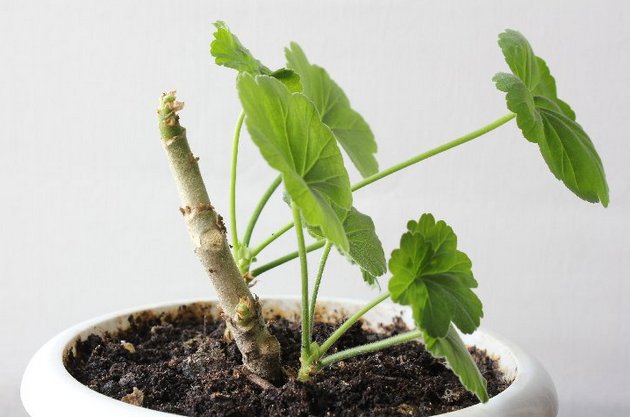
In autumn, the bushes are transplanted into pots with new soil and placed in the room on a light windowsill.
In autumn, the bushes are transplanted into pots with new soil and placed in a room on a light windowsill or illuminated up to 12 hours a day. Most specimens love winter temperatures of 15-18 ° C, when they “rest” for 2 months, they do not bloom. In winter, the flowers are watered moderately after 3-4 days.
Against fungal diseases: gray rot, alternaria, verticillosis, rhizoctonia, rust, bushes are treated with Fitosporin, fungicides Skor, Fundazol, Vitaros, Rovral, Topaz, Previkur.
They protect pets from ticks, which are outwardly invisible, but the leaves begin to dry out. This is especially evident in the fall, after growing in flower beds. If you look at the leaf blade by light, you can see small dots. According to the descriptions of flower growers, these are signs of settled pests that feed on sap. Destroy them with acaricides Oberon, Nissoran.
Pelargonium breeding is an interesting and exciting activity. Each grower chooses the look he likes. Traits of the variety are transmitted only through propagation by cuttings. Summer feeding and abundant watering stops in autumn, giving a beautifully flowering plant an opportunity to gain strength for the new season.

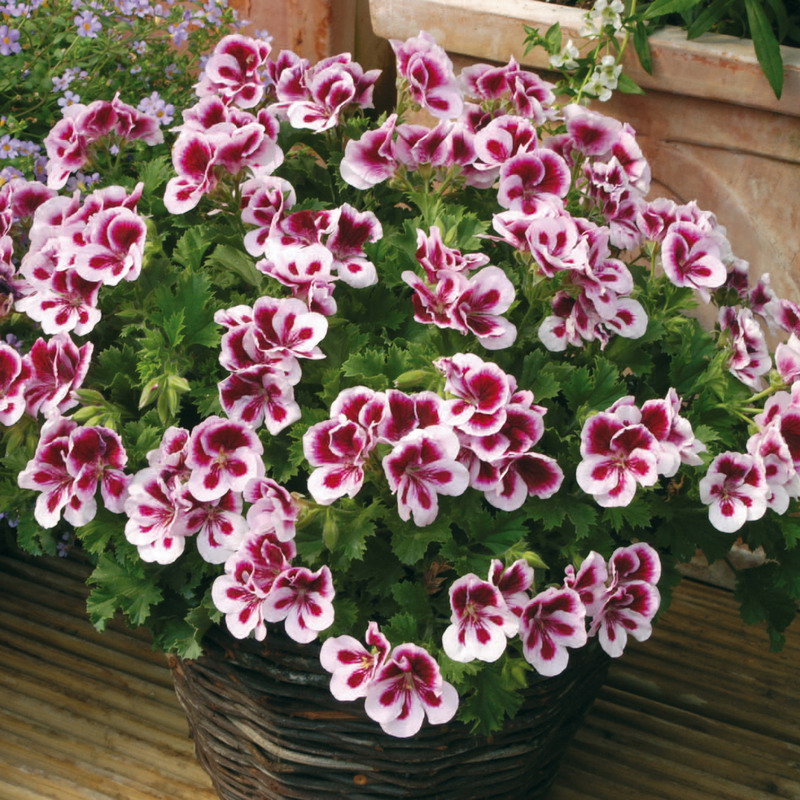
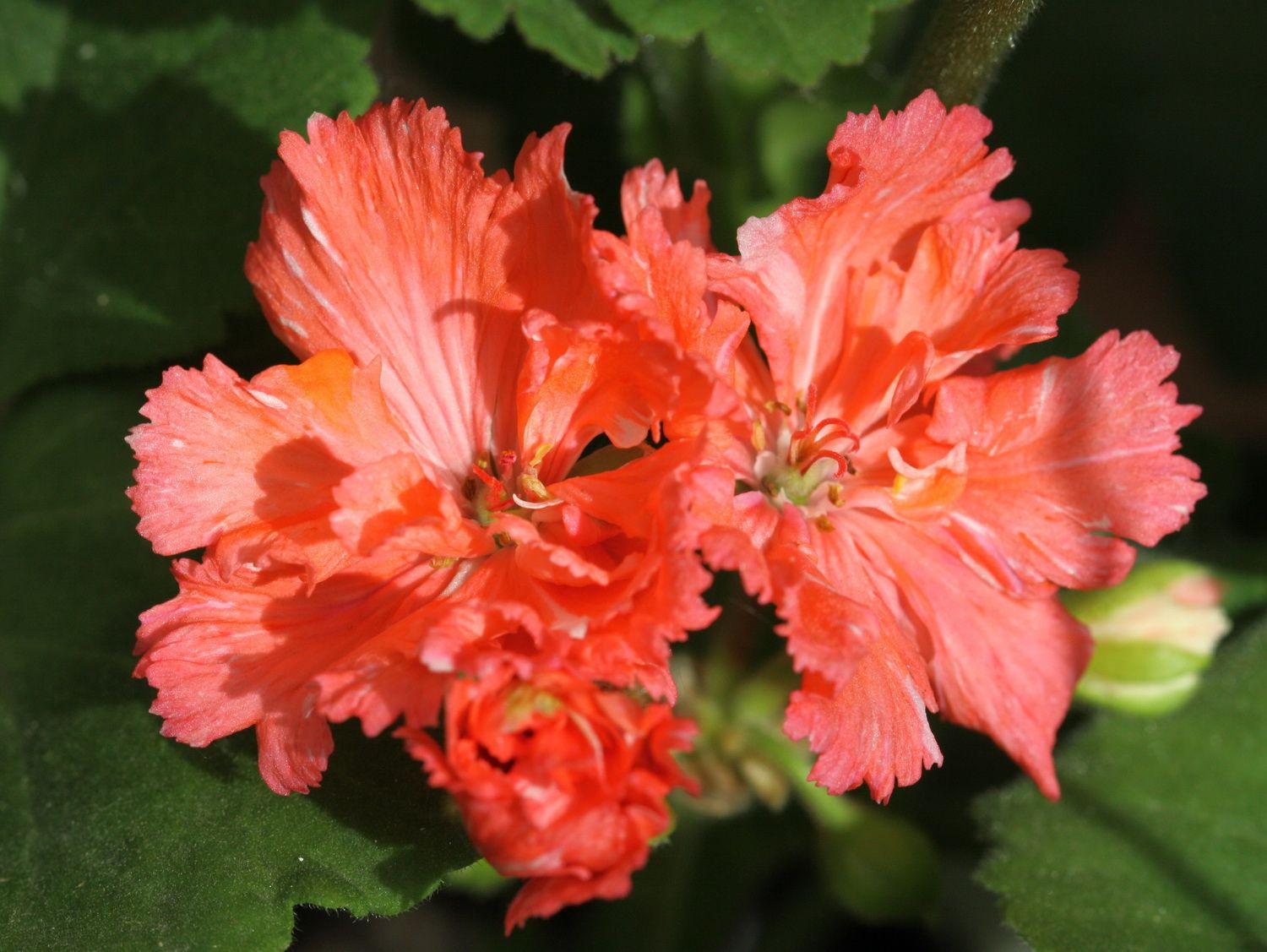
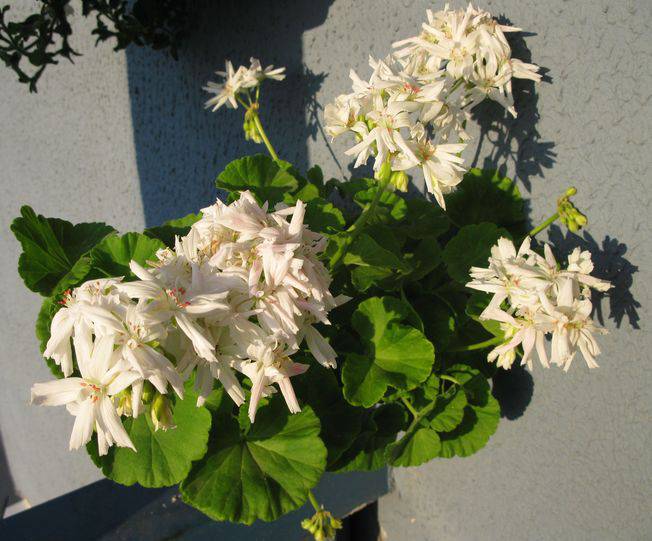

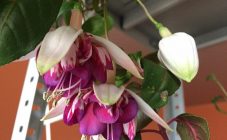
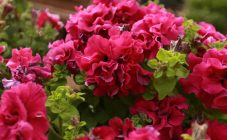
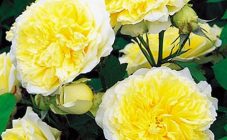
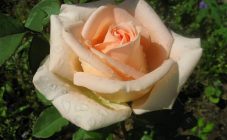
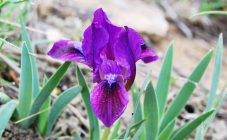







I would also like to know which of the collectors of pelargonium is ready to share the cuttings?